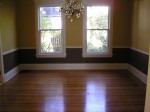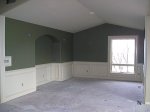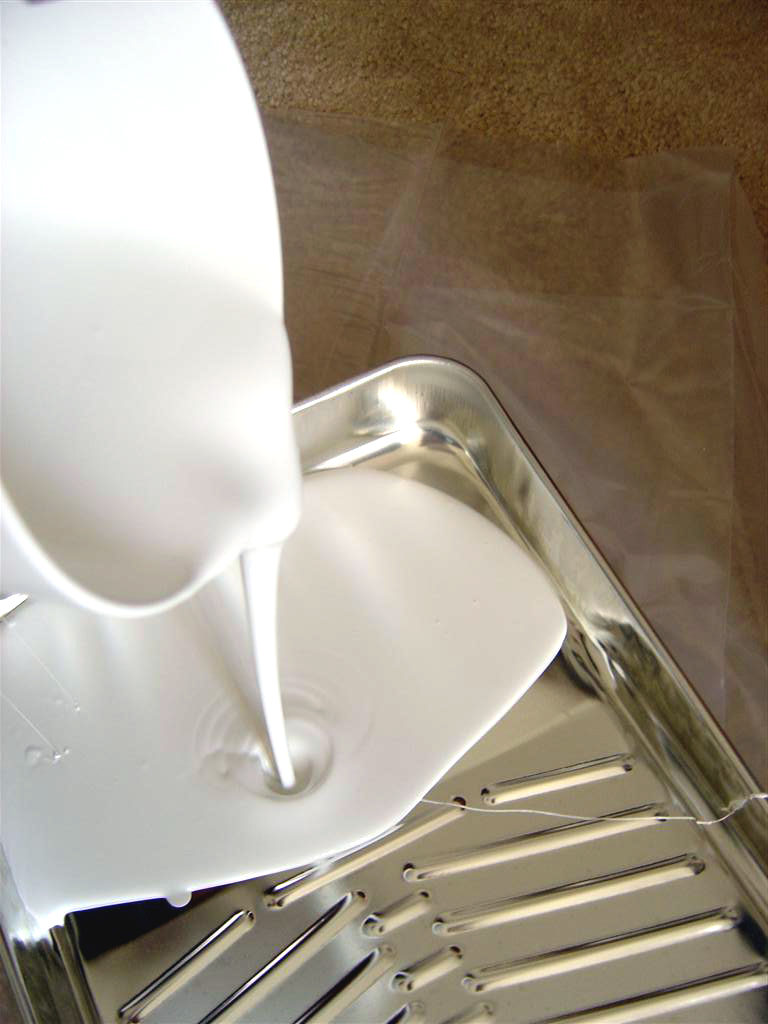What are good dining room paint colors? Certain shades can have a powerful effect on appetite and mood. You may have noticed that fast food restaurants rely heavily on reds, yellows, and oranges in their decor. These warm tones are believed to stimulate the appetite and encourage open conversation. Red and orange are even believed to increase metabolism!
Such vibrant colors can be overstimulating to some people. If you’re one of them, don’t think you need to shy away from warm tones completely. Look for unexpected, toned down versions of these stunning colors: terra cotta, peach, or coral instead of true orange; maroon, barn, or brick-red; or buttery, sandy, or golden yellows.
It’s important to consider lighting when choosing which colors to paint a dining room. Warm shades usually look good at night, when you’re likely to do most of your entertaining, but some yellows can take on an unappealing greenish cast. Make sure you paint a sample swatch and live with it a few days before deciding.
Neutrals, on the other hand, are appealing in every room. For the dining room, bright white, beige, brown, and gray are all attractive choices. These colors are very versatile and make a change of scenery easy; because they blend well with everything, you won’t need to repaint the next time you buy a new set of dinnerware or napkins.
Neutral shades are also optimal when you have an open floor plan and the dining room can be seen from other areas of the house. Your purple living room would clash horribly with a red, orange, or yellow dining room adjacent; if your eating area is a soft gray, however, the colors will flow together beautifully.
Some colors are best avoided completely in the dining room. Cool colors like blue, green, pink, and purple are appetite suppressants. Light reflecting off these shades can give food an unattractive cast. These colors also tend to make the room feel cooler and restful- not what you need when you’re trying to foster conversation! Keep these colors in the bedroom or bathroom, instead. Black is a modern choice, but limit it to furniture, trims, and accents. Cloaking the entire room in such a dark color can create oppressive, distressing emotions in many people.
Paint Color Ideas
You may be set on a color but feel helpless to pull it all together. This section will help you choose trim, furniture, and accessories to perfectly offset your dining room paint color.


Red
For a formal look, combine a deep scarlet or maroon red with black or dark wood furniture and trim.
For more informal settings, pair fresh white walls with funky red furniture, linens, and trim.
Orange
If you like Southwest-style décor, try painting your dining room walls a shade of terra cotta. Use tan or sage green for trim pieces, and aged wood for furnishings.
Peach walls with dark furniture and ivory linens are sweet and sophisticated.
Brighter oranges can be toned down with chocolately trim and creamy, off-white furniture.
Yellow/Gold
Lemon yellow pairs well with crisp white furnishings and blue and white gingham curtains and napkins. Consider this theme if your dining area is mostly reserved for lazy weekend breakfasts.
Golden tones are emphasized by layers of glaze for tremendous texture and depth. Metallics are fairly neutral and go well with almost every other color. Use your imagination! Cream, black, or brown accessories and trim will help create a sophisticated space, while pops of brighter colors can funk it up.
White
White goes with everything but can be a little boring. Try using colorful accents- a red vase, a trio of hand painted decorative plates, or a painted border to liven up a sparse space.
Brown
Chocolate brown is a hot color these days, and it goes well with pastels. Yellow is an obvious choice, but ivory and white also offset this deep shade nicely. If you absolutely love soft pink, baby blue or mint green, add them in small amounts.
Beige/Tan
These neutrals can be gussied up with a layer of glaze or bright accessories. Like white, they can look bland when left alone, but with careful touches of color, they can really shine. Pairing either with dark accents creates an elegant look; use lighter decorations for a more informal setting.
Gray
Gray is a hot color in expensive restaurants these days, contributing to a sleek, modern look. Glass or ebonized furniture, black trim, and mercury glass vases complete the transformation.
If you’re still uninspired, decorating books and magazines, the Internet, and television shows can all help you choose the perfect dining room paint color. Just take your time and keep notes on what you like!


